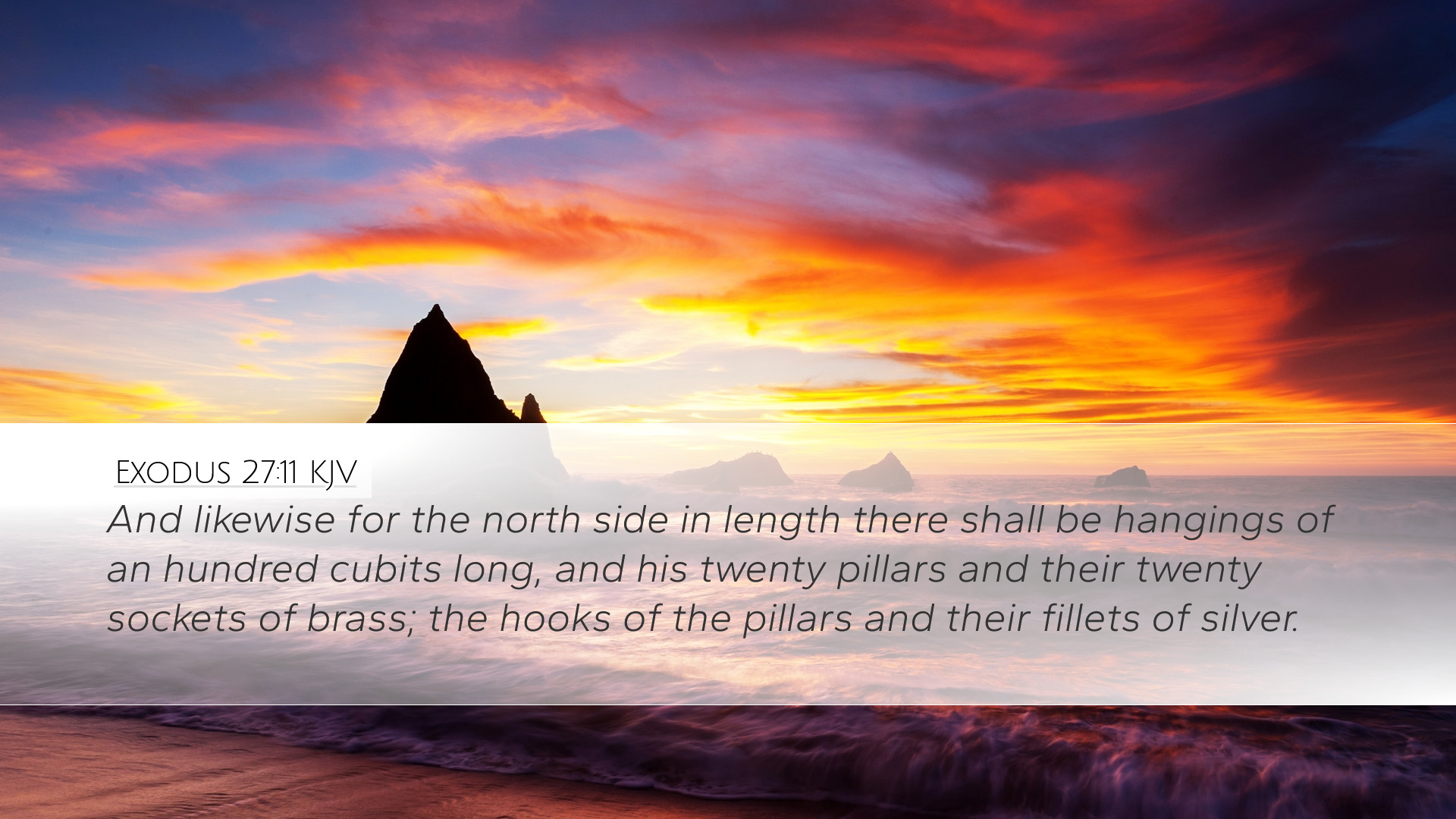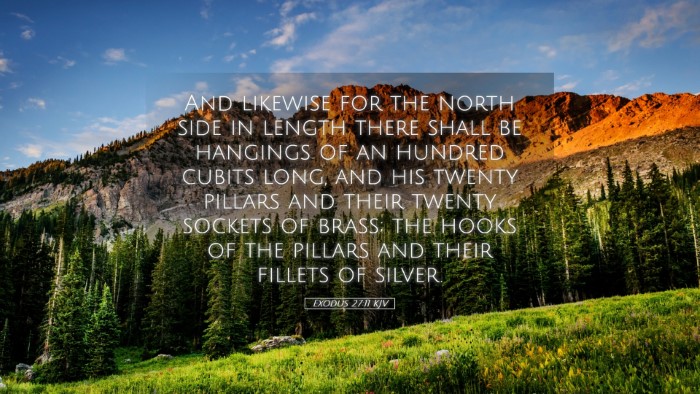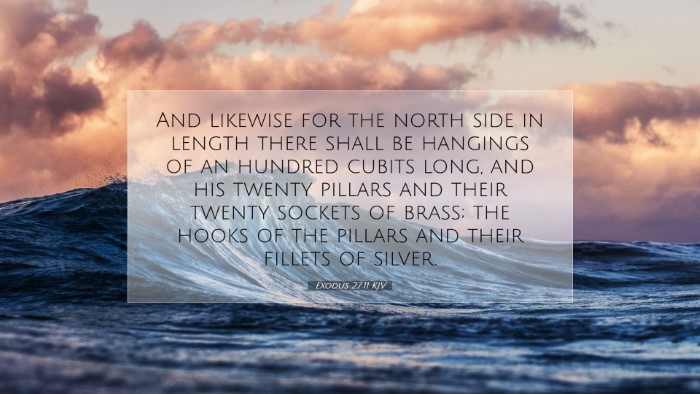Commentary on Exodus 27:11
Verse Text: "And likewise for the north side in length there shall be hangings of an hundred cubits long, and his twenty pillars and their twenty sockets of brass; the hooks of the pillars and their fillets shall be of silver."
Introduction
The verse Exodus 27:11 provides instructions regarding the construction of the court of the tabernacle, emphasizing the specific dimensions and materials required. Understanding this verse offers insights into the divine architecture and the significance of each component within the broader context of the Israelites' worship and approach to God.
Contextual Overview
This verse occurs in a pivotal section of the Book of Exodus, which details the instructions given to Moses for the construction of the tabernacle—a place where God would dwell among His people. The tabernacle serves as a precursor to the Temple in Jerusalem and carries deep theological implications about God's desire to be near humanity.
Insights from Public Domain Commentaries
Matthew Henry's Commentary
Matthew Henry notes that the hangings on the northern side illustrate the importance of the tabernacle's structure in maintaining order and defining God's holiness. Henry observes that the emphasis on the northern side's length—one hundred cubits—symbolizes completeness and divine perfection in God’s dwelling. This detail reflects God's desire for His place of worship to be carefully organized, which represents a standard for our own lives in approaching holiness.
Henry further emphasizes the materials used—brass and silver—representing the dual themes of judgment (brass) and redemption (silver). The use of brass for sockets symbolizes the need for grounding the structure in divine judgment, while the silver hooks denote grace, reminding the worshipper of the costliness of redemption.
Albert Barnes' Notes on the Bible
Albert Barnes elaborates on the specifications given for the hangings and pillars, highlighting that the precision in these dimensions and materials reflects God's intimate involvement in the details of worship. He argues that the hundred cubits serve not only an architectural purpose but also signify the completeness of the atonement that Christ would ultimately fulfill. Barnes also comments on the idea that the twenty pillars signify the authority and order within the worship space, providing stability and strength to the structure.
Moreover, Barnes ties the silver hooks back to the New Testament, indicating that just as these hooks support the hangings of the tabernacle, Christ supports believers through His grace, showcasing the seamless narrative between the Old and New Testaments.
Adam Clarke's Commentary
Adam Clarke delves into the practical applications of the hangings and structural materials mentioned in this verse. Clarke points out that the wall of hangings not only provided a physical barrier but also symbolized the separation between the profane and the divine. This separation signifies God's holiness and the requirement for His people to approach Him with reverence and purity.
Clarke further discusses the dimensions and colors of the hangings as reflective of God's grandeur. He notes that the materials chosen serve a dual purpose—functionally to create a sacred space and symbolically to convey the splendor of God's majesty. The contrast between the brass and silver also serves to remind believers of the dual nature of divine justice and mercy.
Theological Implications
Understanding Exodus 27:11, as elaborated upon by these commentators, leads to several theological reflections:
- Holiness and Separation: The hangings serve to highlight God's holiness and the need for separation from sin, a theme that resonates throughout Scripture.
- Divine Order: The precision in the construction reflects God's intentionality and order in worship, emphasizing that following His instructions is crucial in honoring Him.
- Symbol of Christ: The materials engaged (brass and silver) symbolize themes of judgment and redemption, foreshadowing the ultimate sacrifice of Jesus Christ.
- Completeness of God’s Design: The specific measurement indicates the completeness of God’s plan for His people and the importance of every detail in worship.
Conclusion
Exodus 27:11 serves as a rich theological tapestry woven from historical, cultural, and spiritual threads. Through the insights of Matthew Henry, Albert Barnes, and Adam Clarke, we see a profound understanding of how even the smallest details in God's instructions for worship carry monumental significance. The design of the tabernacle, including the specifications of the northern hangings, reflects God's overarching narrative of holiness, grace, and human redemption.


